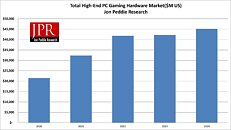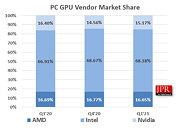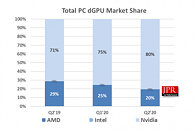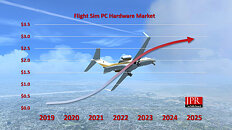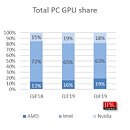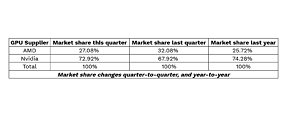GPU and CPU Markets See Q1 Gains, but Outlook Remains Mixed
According to Jon Peddie Research latest report, the global GPU and CPU markets ended Q1 2024 on growth. GPU shipments reached 70 million units, while PC CPU shipments increased by 33% year-over-year, the second consecutive yearly increase in over two decades. Over the next five years, discrete GPUs are projected to achieve 22% penetration in the PC market as the overall GPU installed approaches 3 billion units by 2026. Among major GPU vendors, AMD's market share dipped 0.7% from last quarter, while Intel gained 0.3% and Nvidia rose 0.4%. However, overall GPU shipments declined 9.9% quarter-over-quarter. The total GPU attach rate for PCs was 113%, slightly down from the prior quarter. Desktop graphics add-in board shipments also decreased 14.8%.
While Q1 is typically flat or down versus Q4, Jon Peddie Research's president suggests this quarter's performance could signal a return to normal seasonality. With Microsoft, AMD and Intel promoting AI PCs, and forecasts pointing to growth in Q2, there are optimistic signs - although semiconductor suppliers are guiding 7.9% down on average for next quarter.
While Q1 is typically flat or down versus Q4, Jon Peddie Research's president suggests this quarter's performance could signal a return to normal seasonality. With Microsoft, AMD and Intel promoting AI PCs, and forecasts pointing to growth in Q2, there are optimistic signs - although semiconductor suppliers are guiding 7.9% down on average for next quarter.

























